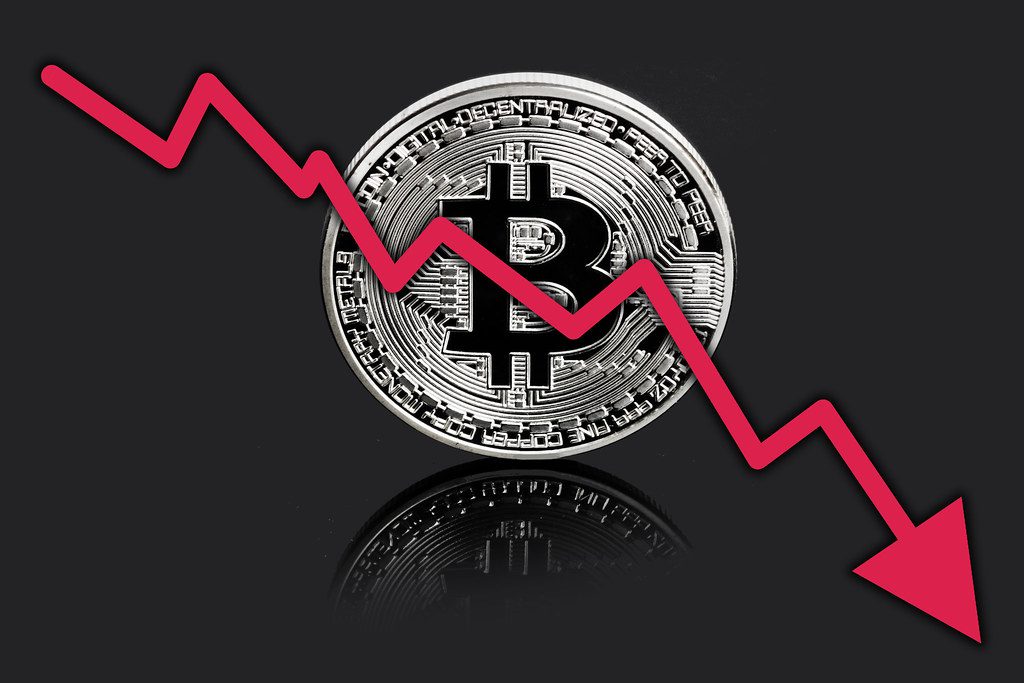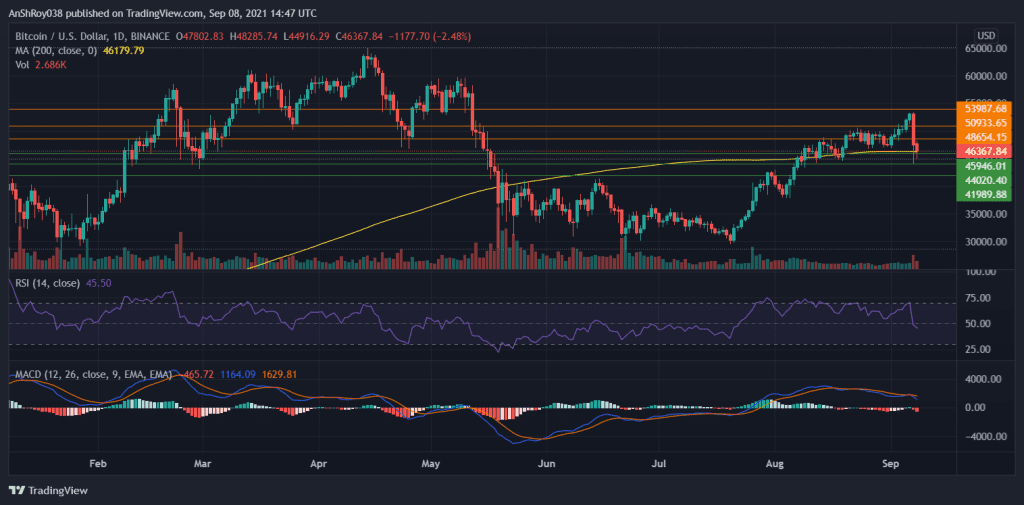
Key Takeaways:
- Bitcoin prices plunged 17% between high to low on September 7.
- El Salvador’s rollout of BTC as legal tender stuttered due to technical glitches
NEW DELHI (CoinChapter.com) — Bitcoin suffered its greatest single-day loss in more than 2 months on Tuesday, falling 17.4% from September 7’s high of $53,393.15 to the day’s low of $44,097.81. Before the crash, Bitcoin broke above $53,000 for the first time since May 19’s cataclysmic crash.
Meanwhile, El Salvador’s Bitcoin experiment was off to a rocky start as the government’s official wallet, Chivo, suffered technical glitches. The issue seems resolved for now, but it seems BTC prices reacted to the news. Tuesday’s launch was one of the biggest tests of the flagship crypto’s real-world usefulness.
El Salvador’s Shot At Bitcoin
El Salvador’s official BTC wallet app Chivo suffered glitches early on Tuesday. As a result, Bitcoin plunged to its lowest levels in a month when news spread that the government disconnected its official wallet to fix problems. Although President Bukele announced the app was available to download again, the news had already done the damage.
If El Salvador’s experiment succeeds, other countries might follow its lead. Bitcoin’s adoption in the Central American country would get an initial boost from the government’s wallet Chivo, which comes pre-loaded with $30 worth of BTC for people who register with a Salvadorian national ID number.
We are in unchartered waters with this launch, but I’m glad to see this experiment happen overall, and I think we’ll learn a lot from it.
Garrick Hileman, Head of Research for Blockchain.com.
Both enthusiasts and critics of cryptocurrencies are monitoring El Salvador’s experiment. All eyes are on the country to see if many people would use Bitcoin alongside the U.S Dollar and whether it benefits the violent, impoverished Central American nation.
Also Read: SEC doubles down on crypto exchanges. Is Coinbase next?
The government has made it mandatory for businesses to accept Bitcoin as a form of payment. In an interview, Javier Argueta, the legal advisor to the presidency, confirmed that it would also be an obligation to have the virtual wallet to carry out transactions.
You, having the electronic wallet, must accept the transaction. The ‘must’ is the transaction obligation… you are required to have the electronic wallet. What is mandatory is the transaction,
Javier Argueta, in an interview (Translated from Spanish)
The obligation is the main point that different business sectors have complained about and generates the most confusion. Though no laws or regulations clearly state it, if businesses refuse to accept BTC, they would be risk infractions to the Consumer Protection Law.
After Bitcoin’s prices plummeted, President Nayib Bukele announced he was buying the dip. The president later tweeted El Salvador now holds 550 Bitcoins. While the president enjoys approval ratings of 80%, his BTC law is widely unpopular.
El Salvadorians took to the streets to protest against the law, worried about the effect of cryptocurrency’s volatility on their savings. In a poll by El Salvador’s Universidad Centroamericana Jose Simeon Canas, two-thirds of respondents wanted the law repealed, while more than 70% preferred using U.S Dollars.
Price Charts
Bitcoin prices fell to levels last seen on August 9, as other cryptocurrencies followed suit. As a result, the global crypto market went down by 9.20% in one day. Before recovering its footing, BTC breached below its 50-Day (Green) and 200-Day (Yellow) Moving Average trendlines.
Also, BTC prices broke below dynamic support from its 26-Day (Red) Exponential MA during its free fall. However, prices are still above the short and long-term MA lines, indicating BTC is bullish across time horizons.

At present, Bitcoin has immediate support near its 200-Day MA line at $45,946. If it fails, bulls will find support at $44,020, followed by support at $41,989.
In case of an upward rally, Bitcoin will face resistance at $48,923. On the other hand, if the uptrend continues, resistance at $50,933 will come into play.

Bitcoin’s MACD, which had turned bullish on September 6, charted a bearish crossover after Tuesday’s dip, as the MACD histogram shows. A bearish crossover occurs when the MACD line (12-Day and 26-Day EMA difference) moves below the MACD signal line (9-Day EMA of MACD).
Interestingly, BTC’s slow and fast moving MA lines seemed poised to chart a golden cross on the charts. Meanwhile, the relative strength index remains neutral for BTC, with a value of 45.50.
At the time of writing, BTC was trading at $46,239, down 2.75% on the day.


